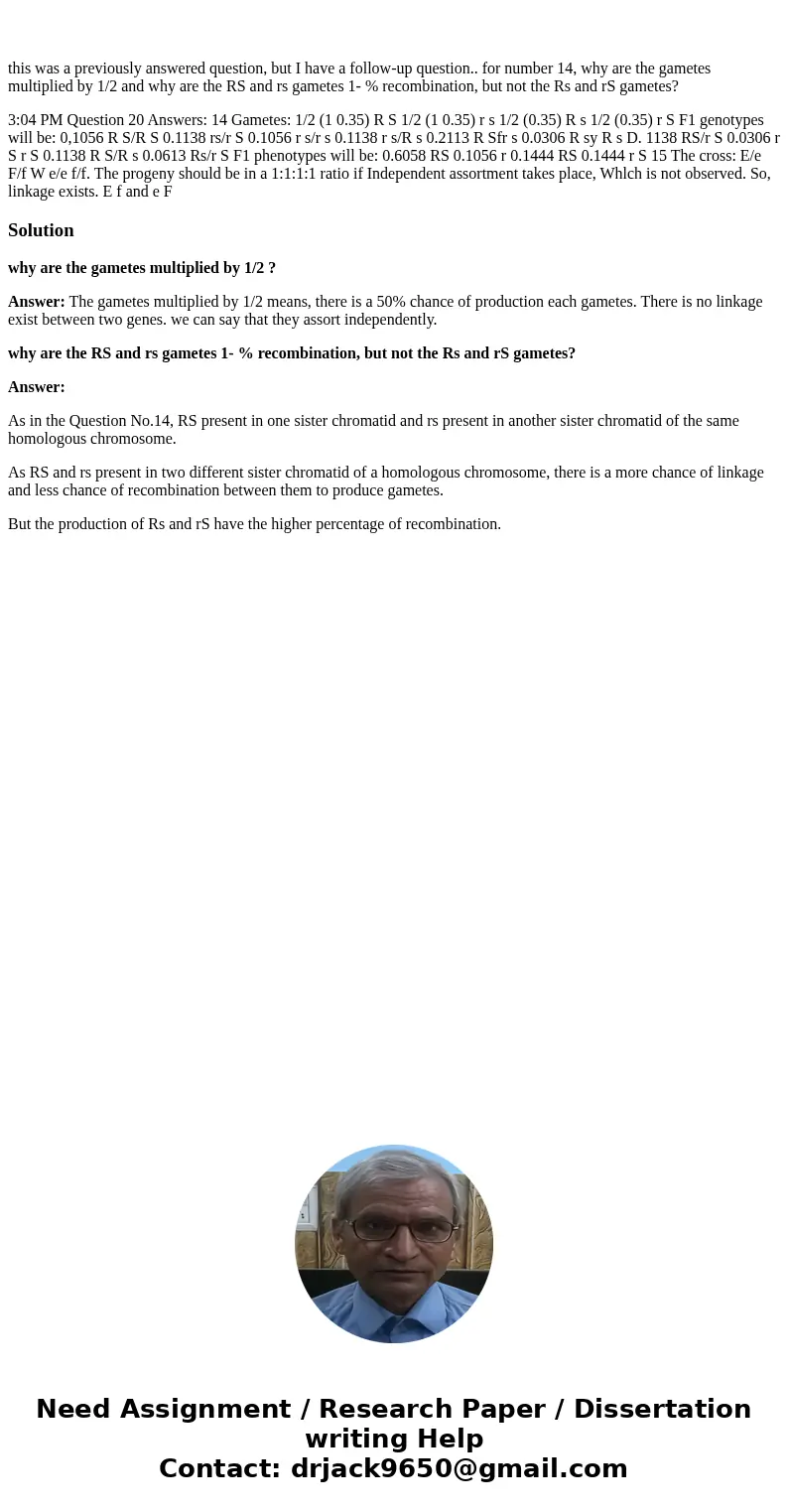this was a previously answered question but I have a followu
this was a previously answered question, but I have a follow-up question.. for number 14, why are the gametes multiplied by 1/2 and why are the RS and rs gametes 1- % recombination, but not the Rs and rS gametes?
Solution
why are the gametes multiplied by 1/2 ?
Answer: The gametes multiplied by 1/2 means, there is a 50% chance of production each gametes. There is no linkage exist between two genes. we can say that they assort independently.
why are the RS and rs gametes 1- % recombination, but not the Rs and rS gametes?
Answer:
As in the Question No.14, RS present in one sister chromatid and rs present in another sister chromatid of the same homologous chromosome.
As RS and rs present in two different sister chromatid of a homologous chromosome, there is a more chance of linkage and less chance of recombination between them to produce gametes.
But the production of Rs and rS have the higher percentage of recombination.

 Homework Sourse
Homework Sourse